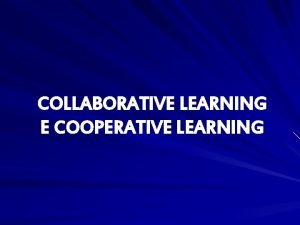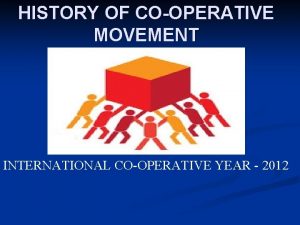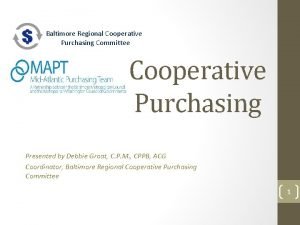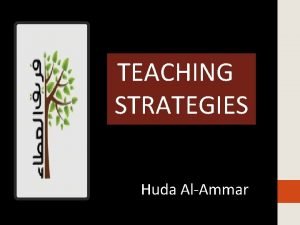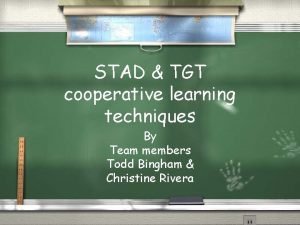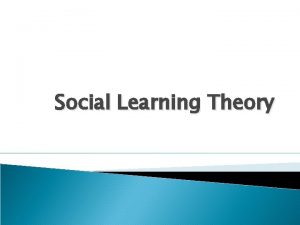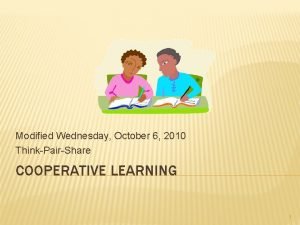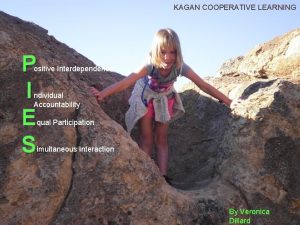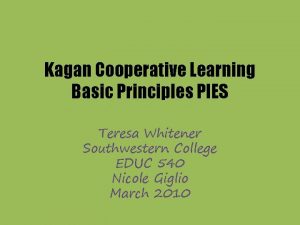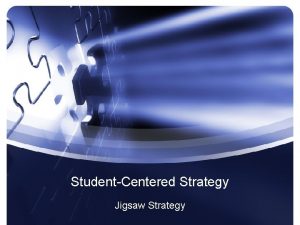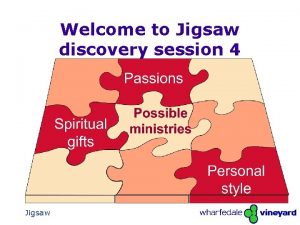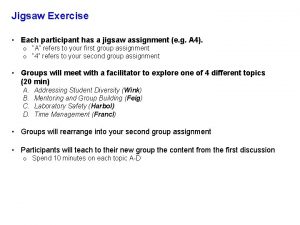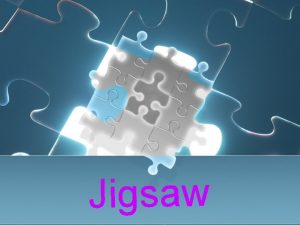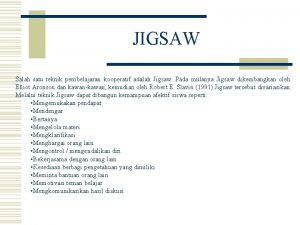DIVERSITY COMMITTEE PRESENTS EXPERT JIGSAW Cooperative learning method











- Slides: 11

DIVERSITY COMMITTEE PRESENTS: EXPERT JIGSAW • Cooperative learning method that enables all students to take part of the teaching and learning process • Developed by Eliot Aronson to ease racial tensions

What are your concerns (or student concerns) about cooperative learning?


In the mid-1960 s, cooperative learning was relatively unknown. Cultural resistance due to social Darwinism and the myth of “rugged individualism. ” Social Changes: Desegregation, Skinner and shifts in business models for success.

keiretsu

EXPERT JIGSAW

PROCESS: STEP 1: EXPERT GROUPS JOIN FORCES • group of students assigned to the same reading segment or selection within their “expert group. ” • Students discuss their segment, fill out their direction sheet, and decide what and how they should present to their home groups.

STEP 2: “HOME” Groups Home groups are typically composed of one member from each expert group. Each expert student has read a different article and will need to teach the information to their home group. Students take notes, ask questions for clarification, and discuss information.

STEP 3: ASSESSMENT Individual projects Posters/Graphic organizers/ Summaries Tests Group projects Create a quiz with answers Group Pre-Test

OUR STEPS in today’s expert groups: 1) Join expert groups 2) Ice Breaker 3) Pre-reading question 4) Read article (aloud) 5) Group answers questions together, but each individual records these answers on the report sheet.

Home Groups: 1) Count off and then go to home groups 2) Ice Breaker 3) Share reports; each individual takes notes on each report 4) Assessment (no time, but essential to process)
 Collaborative learning vs cooperative learning
Collaborative learning vs cooperative learning History of cooperative movement in india
History of cooperative movement in india Baltimore regional cooperative purchasing committee
Baltimore regional cooperative purchasing committee Why is genetic diversity important
Why is genetic diversity important Ecosystem jigsaw activity
Ecosystem jigsaw activity Cooperative vs collaborative learning
Cooperative vs collaborative learning Tgt cooperative learning
Tgt cooperative learning Social definition
Social definition Cooperative learning ideatore
Cooperative learning ideatore Think pair share cooperative learning
Think pair share cooperative learning Pies kagan
Pies kagan Kagan principles
Kagan principles
